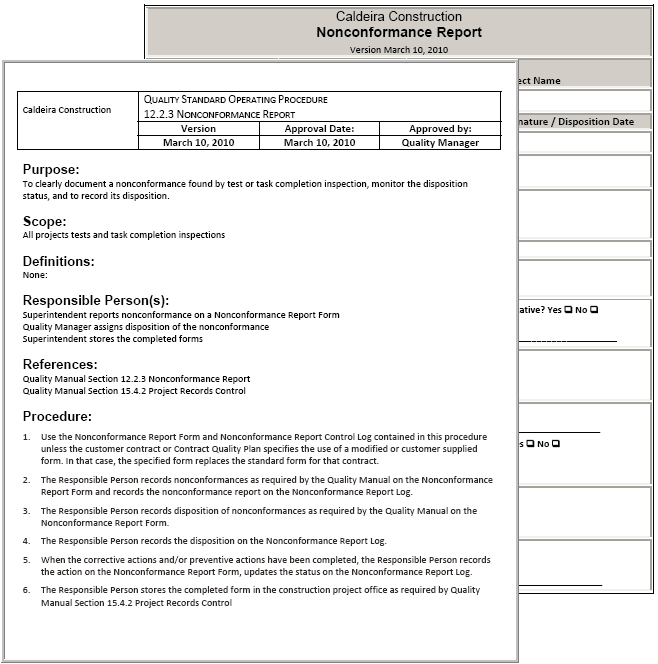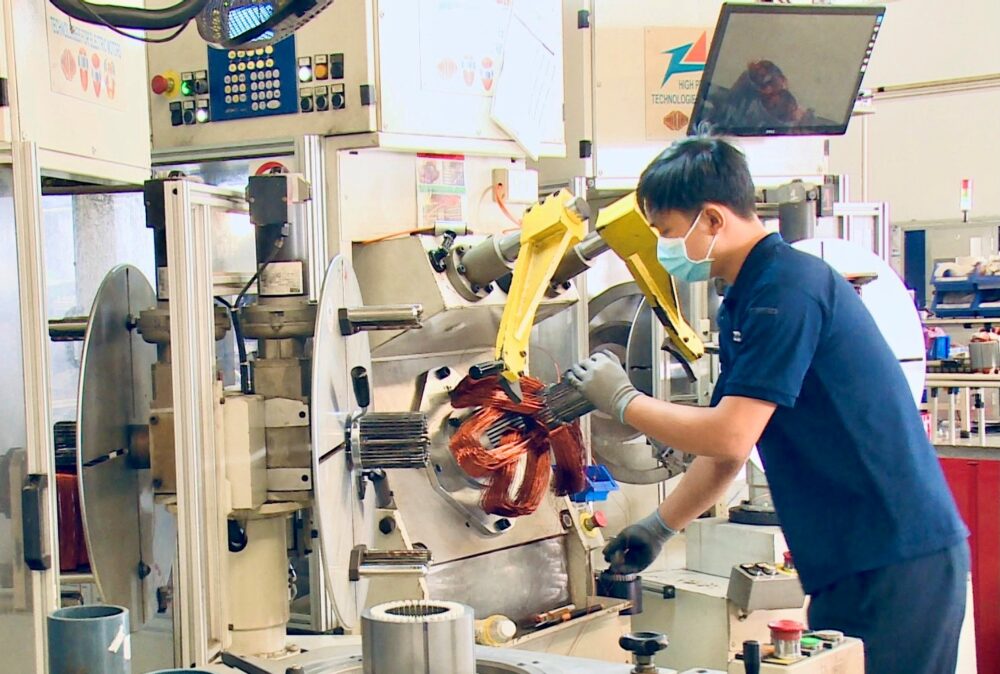Problem Statement
Remember the last time a manual told you to press a button and nothing happened? You spent fifteen minutes on the phone waiting for customer service, and then you’re told you just have to press it past where it starts giving pressure, but you were afraid you would break it? These are details it’s almost impossible to capture with simple text.
The Old Standby
Everyone uses work instructions. Some are called ‘standard operating procedures’. Others are ISO9001 or regulatory compliance procedures. Some are safety procedures. Some are software transaction guidelines. Some are … well almost anything. Most work instructions follow an established formula. Work instructions have been around for at least a century and probably a lot longer. Frederick Taylor and Frank Gilbreth popularized them as a means to implement the “one best way” to do any task. While they can be written in a myriad of ways, they generally include a procedural guide:
|
Structure |
Typical Work Procedure |
|
Introduction
Test Release and repeat |

|
At iPOV, I tended to see these documents as the “sheet music” of routine industrial activity. They make the tasks definable, repeatable, and capable of controlled change. But how are these procedures understood? Can the reader relate them to the task at hand or must they waste time puzzling over them? Or worse, being too intimidated to follow them?
Where Text Fails and Video Succeeds
Most of the time, written instructions are clear, but there are common situations where a written, step-by-step procedure is clearly inadequate. While purists may believe that any task can be described by a well-written procedure, we have seen many situations where the task is difficult or impossible to reduce to a text and image work instruction. We offer the following video examples as evidence.
How do you show the rhythm of the task?
The whole point of this skill is to perform a task much faster than most people believe possible. To achieve that speed requires two things: doing the correct steps, and following a fast, smooth rhythm. The inherent rhythm is a critical part of the expertise. In fact, achieving a smooth, consistent rhythm is how you know that you are good at the task. So how can you learn rhythm from a written work instruction? I would argue that you can’t. You can only learn it by doing it yourself, or possibly modeling from seeing someone else do it correctly.
Task done at full expert speed
Task slowed down for explanation
One useful approach (illustrated in the example above) is to use two videos. The first shows the task being performed at full expert speed and displays the rhythm and expectations. The second video breaks the task down into steps that explain actions and decisions that are hidden in the expert performance. When a worker can do the task with a similarly fast, fluid motion, they know they are qualified. This is the confidence they get with OJT from an expert. Except the video doesn’t draw wages.
How do you know how hard to push?
The human brain is a marvelous estimator of physical actions. When you watch the technician in the following video push the ribbon on with two fingers and see that the tendons in the back of his hand barely quiver, your brain automatically judges how much force he is using. Most people can almost ‘feel’ the amount of pressure that he is exerting. Only two things could accurately convey that knowledge: the best is to do it yourself … the alternative is to view a movie like this. The movie is over 15 years old, but it makes the point better than any other one I have seen.
There are physical tasks throughout industry with similar elements. Watching safety demonstrations for lifting or washing will reveal the same valuable, subtle physical clues. Clues that will only be available from a live demonstration or a video clip like this.
How do you show things that can’t be seen?
A camera can go places that are too difficult or dangerous or complicated for the human viewer. You can make a drawing of these places, but you can’t watch things happen. A camera can also go places and see things that hard for the brain to directly comprehend:
- It can make fast events visible with slow motion
- It can make slow things less tedious with time-lapse or omitted time.
- It can see things that are really small or really large
- It can view action from several angles simultaneously
- It can see where there is very little light
- It can go where a human would not dare (see example at left)
- etc.
You can try to write text and graphic descriptions of these phenomena – but to what end? They will tax the imagination of the reader. You can create computer simulations, but how much will it cost and how long will it take? As the following example shows, a little bit of inexpensive camera work may do just as well and is far more believable.
How do you demonstrate artistry?
As technology invades more and more of our professional tasks, it brings a level of complexity and sophistication that is very difficult to explain. In todays’ offices, for example, skill at PowerPoint is nearly as essential as skill with a file was for early manufacturing workers. Except that PowerPoint skills are more varied and difficult to describe.
This example shows how to do a complex scene change in Photoshop. Imagine trying to follow a printed work instruction like the ones at the top of this article. It can be done, but it will take a lot longer to construct and the effect won’t be any better.
How do you cross language barriers?
American (indeed global) industry has tasks that need to be performed by people who speak different languages. If you write text instructions, you have to translate them … and you have to verify that the translations are accurate. If you share videos of a task, the video will communicate important information accurately to every viewer, regardless of their mother tongue. Watch the following video clip. Unless you speak German, the audio won’t help.
Even without the audio, didn’t you gain some understanding of the task by viewing the video? Now imagine a situation where you are trying to teach a person who speaks a different language. Communication may have errors, but if the conversation were held while watching the same video, wouldn’t that reduce the size of the errors?
Insight: Video is Industrial Sheet Music
A few people can read sheet music and visualize the melody. Most of us cannot. We must hear it being played. As tasks in our technological world become more sophisticated and demanding, it is not enough to hand sheet music (text and image work instructions) to our workforce. We should be sensitive to the situations where the task is complex, rhythmic, mysterious or artistic and use video-based work instructions instead. We have proven many times that instructions need not be expensive or time-consuming.
They just have to show it like it is.
It’s only fair to our workforce and our bottom line.

